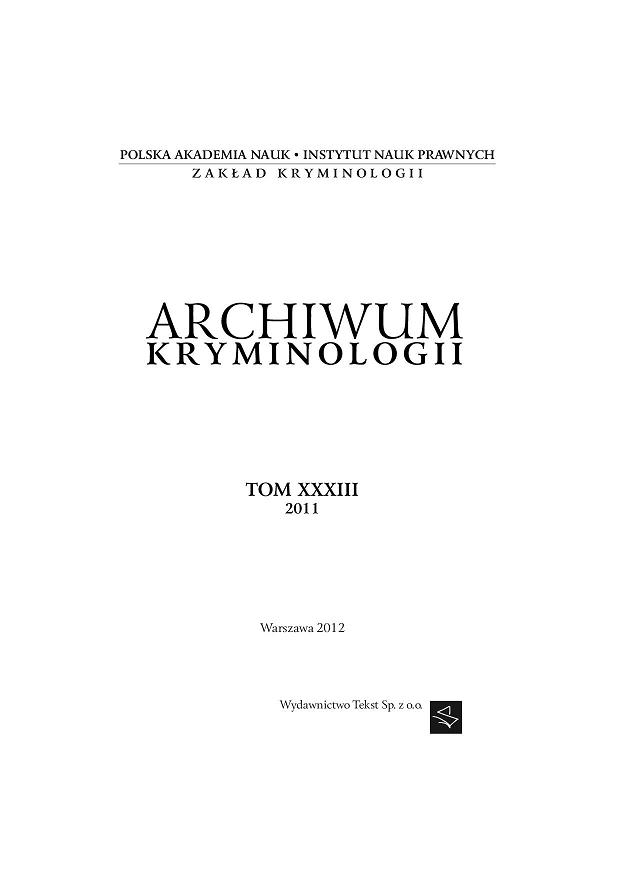Uwarunkowaia przestępczości nieletnich na obszarze województwa warmińsko-mazurskiego w świetle badań empirycznych
Determinants of juvenile delinquency in Warmian-Masurian voivodeship in the light of empirical studies
Author(s): Monika KotowskaSubject(s): Law, Constitution, Jurisprudence
Published by: Instytut Nauk Prawnych PAN
Keywords: JUVENILE DELIQUENCY; CRIMINOLOGY;
Summary/Abstract: This publication focuses on criminological analysis of juvenile delinquency. The issue has been the subject of thorough research – and heated discussions – for years, which proves how important an issue it is. Yet, the problem of juvenile delinquency so far remains unsolved. What is of particular concern is that the increased frequency of young people turning to pathological behaviours puts psychophysical development of society in danger. Criminological studies indicate that depraved young people many often become criminal adults. Importantly, there are no wider criminological studies illustrating juvenile delinquency in a specific area of Warmian-Masurian voivodeship. It is one of the poorest areas in Poland with the highest unemployment rates and the lowest rate of economic development. The eco-nomic transformation in 1990s involved closures of state-operated farms and restructuring of state-owned industrial plants and affected areas still have high levels of poverty, unemployment and crime. Passiveness of the so-called “post-state-operated-farming-communities” and their strong demanding attitudes towards the state are serious social problems today. They are also indicated to be the source of criminal behaviour, also in the youngest members of the communities. The main research intention of this paper was to obtain a criminological characteristic of juvenile delinquents. The research was also to explain the phenomenon of juvenile delinquency. The research employed an indirect observation method consisting in analyzing official documents, namely court files of such proceedings in which a punishable offence was committed by a minor. The investigation included four court districts in the voivodeship: in Olsztyn, Iława, Giżycko and Szczytno. The choice of the district was guided by the diversity of the urban and industrial development, population size, and unemployment rate of the areas. The sample areas are thought to be representative for the whole voivodeship and the results of the study can be deemed more general and translated into wider population.
Journal: Archiwum Kryminologii
- Issue Year: 2011
- Issue No: XXXIII
- Page Range: 197-212
- Page Count: 16
- Language: Polish

